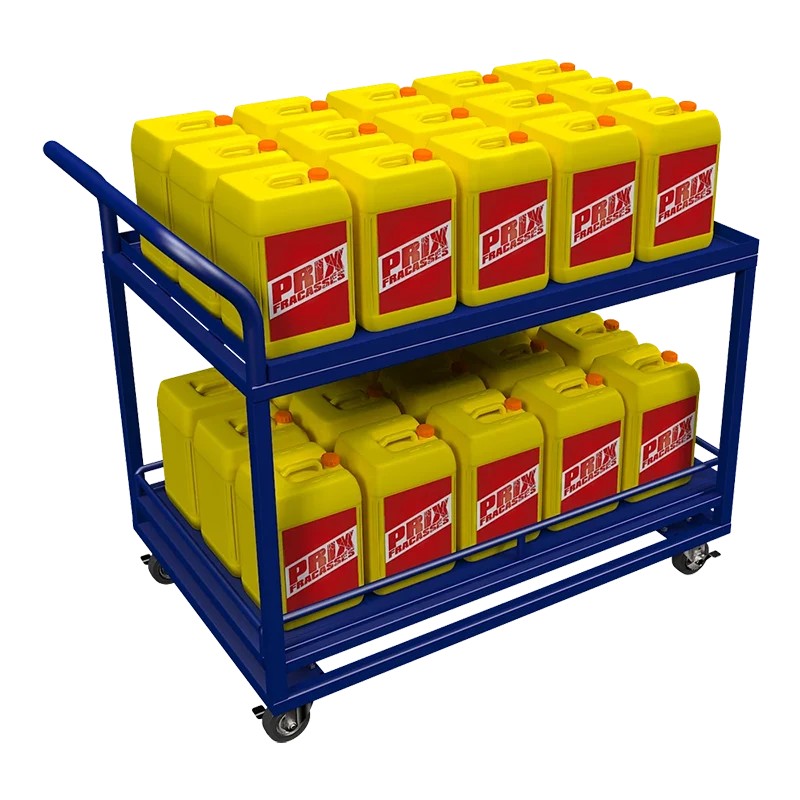 |
For a B2B distributor, a mispick isn't a small mistake—it's a costly error that leads to returns, reshipping costs, and unhappy customers. In a warehouse with thousands of small SKUs, accuracy is everything. Yet, many operations use a standard two tier cart on wheels that actively works against accuracy. The confined, "blind" bottom shelf is a major source of errors, turning your order picking process into a high-risk gamble.
|
In a fast-paced environment, operators don't have time to get on their knees and inspect the dark corners of a bottom shelf. They are forced to place items by feel. This "blind spot" is a black hole for order integrity. Small items get lost, pushed to the back, or hidden under other items. When it's time to pack, the operator can't visually confirm the contents, leading to a guess. This is how mispicks happen.
The design of the traditional cart is the root cause of two major profit-draining problems in warehouses that handle diverse SKUs, like electronic parts, auto accessories, or sporting goods.
Without a clear line of sight, methodical organization is impossible. Operators end up placing items haphazardly. Similar-looking SKUs get mixed. When the cart arrives at the packing station, the checker can't be 100% certain they have the right components without emptying the entire bin, which costs time. More often, the error is missed entirely, and the wrong item is shipped to your customer.
The "bend and shove" motion required to use the bottom shelf means items are constantly being jammed against the hard steel frame of the top shelf. This causes direct damage to products and packaging. For B2B distributors, sending a customer a product with a crushed box is unprofessional and can lead to a return, even if the item inside is fine. This is a 100% avoidable loss caused by a flawed tool.
The fix for these problems is simple: give your operators 100% visibility. A two tier cart on wheels with a pull-out bottom shelf completely eliminates the "blind spot." The lower tray slides out on its own stable track, transforming into an open, accessible platform just like the top shelf.
This design change has an immediate impact. An operator can now place items on the bottom shelf with the same care and precision as the top. They can organize components, see all items at a glance, and visually confirm their pick. This removes the guesswork, which is the primary cause of mispicks. It also provides clear, unobstructed access, eliminating the risk of item damage from collisions with the frame.
| Talk With An Expert |
Improving your order picking accuracy doesn't always require a complex software overhaul. It can be as simple as equipping your team with tools that are designed for the job. By replacing a cart that creates errors with one that promotes accuracy, you directly reduce the costs associated with mispicks, product damage, and returns. It's a fundamental fix that protects your inventory and your customer relationships.
Standard carts have a "blind spot" on the bottom shelf. This lack of visibility forces operators to place items haphazardly, mixing SKUs and losing track of items. This disorganization is a direct cause of picking the wrong item.
This design is ideal for high-SKU environments. The pull-out shelf provides full visibility, allowing operators to neatly organize many different small components without losing them or mixing them up, which is crucial for accuracy.
Yes. It eliminates the "bend and shove" motion. By sliding the shelf out, operators get open, top-down access, which prevents them from colliding items with the upper shelf's frame, reducing damage to packaging and products.
The main business benefit is a measurable reduction in costly errors. It leads to fewer mispicks (reducing return/reshipping costs) and less product damage (reducing stock loss), which directly improves profitability.
Full visibility allows operators to work with precision. They can visually confirm every item they pick and place, and they can organize the cart space methodically. This removes guesswork, which increases both speed and accuracy.